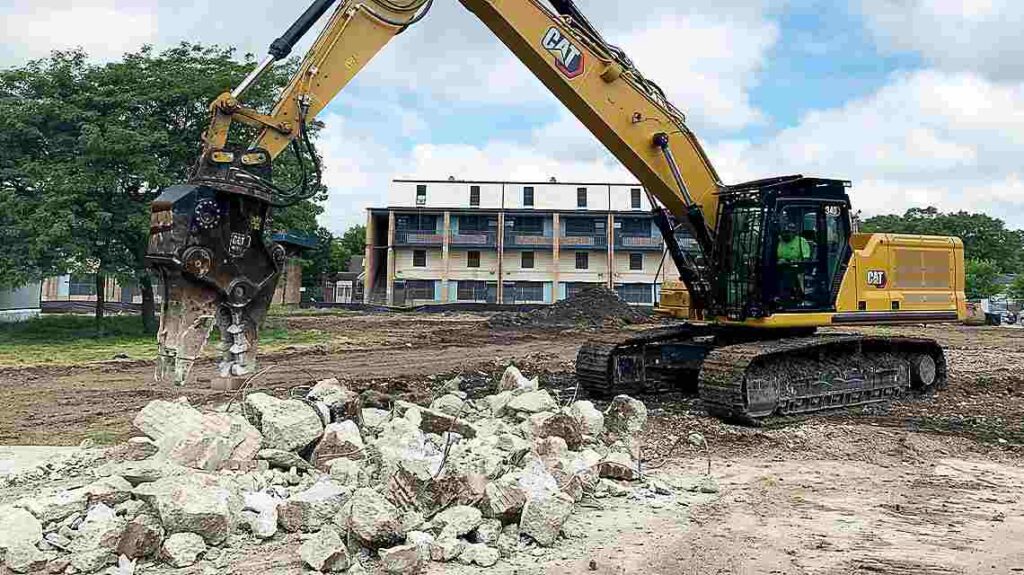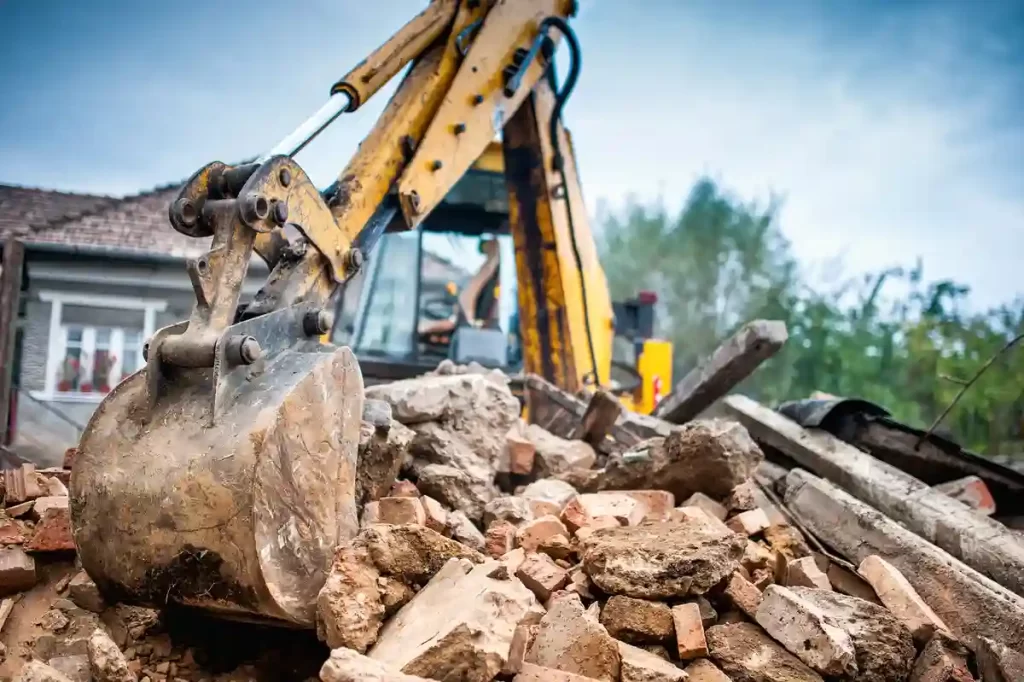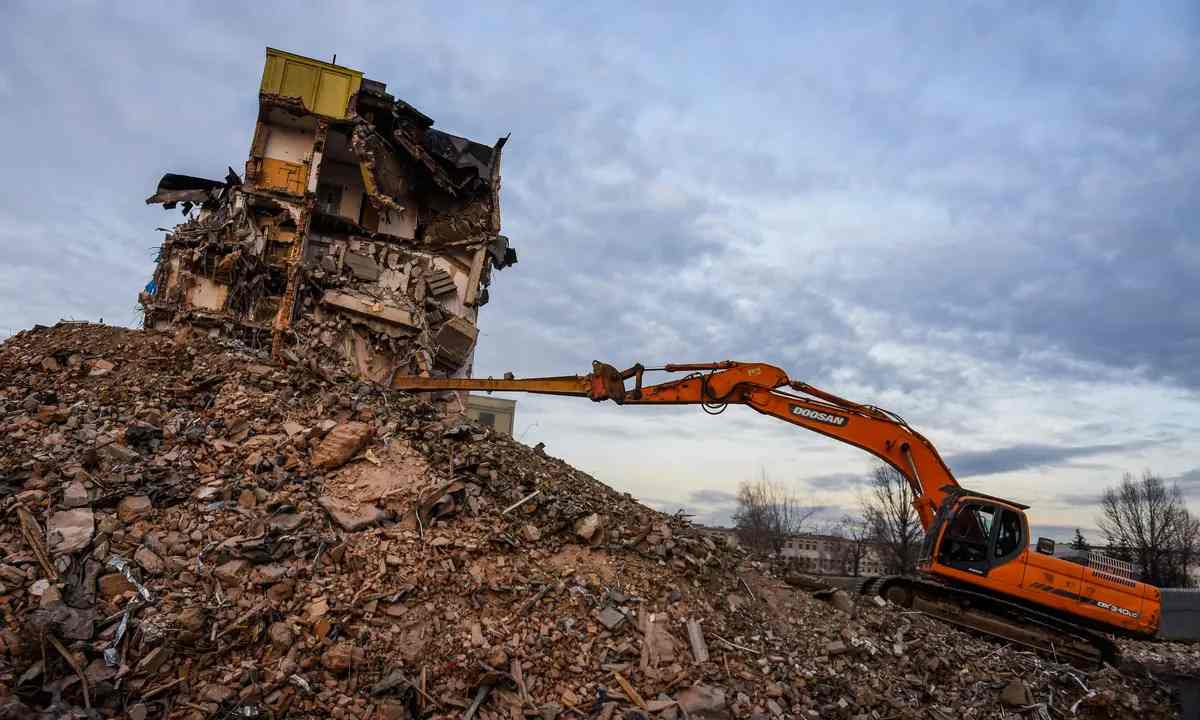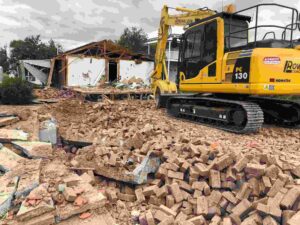In the dynamic landscape of Michigan’s business environment, the choice between repurposing and demolition holds significant implications for companies seeking sustainable growth and adaptive strategies. This decision-making process involves intricate considerations, A&B Junk helps to embark the ranging from economic viability to environmental impact. Repurposing, the art of transforming existing structures for new purposes, offers the potential to preserve historical value, minimize waste, and align with evolving community needs. On the other hand, demolition presents a clean slate for innovative development but may incur environmental costs and community disruption. Navigating this dichotomy requires an in-depth analysis of financial feasibility, regulatory compliance, and the long-term impact on the local ecosystem. As Michigan businesses stand at the crossroads of repurposing and demolition, strategic decision-making becomes paramount for fostering resilience, fostering economic growth, and contributing to the sustainable evolution of the state’s commercial landscape.
1. Cost Analysis:
The decision between repurposing and demolition often hinges on a comprehensive cost analysis. Repurposing a building involves assessing the expenses associated with renovations, upgrades, and adaptive reuse. This includes evaluating the need for structural improvements, electrical and plumbing upgrades, and compliance with modern building codes. On the other hand, demolition entails not only the cost of tearing down the existing structure but also potential expenses related to waste disposal and, subsequently, the construction of a new building.
In Michigan, where economic considerations play a pivotal role in decision-making, businesses need to carefully evaluate their budget constraints. It’s crucial to compare the initial costs of repurposing with the long-term benefits, considering factors such as energy efficiency and operational savings. Demolition costs, while upfront, may provide a clean slate for new construction, potentially leading to more efficient and cost-effective facilities in the long run.
2. Structural Condition:
The current structural condition of the building is a crucial factor influencing the choice between repurposing and demolition. Buildings that are in good condition and require minimal repairs are prime candidates for repurposing. However, if a structure is plagued by extensive damage, compromised integrity, or fails to meet current safety standards and building codes, demolition becomes a more practical solution.
In Michigan, where weather extremes can take a toll on buildings, especially in older industrial areas, the structural assessment becomes even more critical. Engaging structural engineers to conduct a thorough evaluation can provide valuable insights into whether the building can be repurposed without compromising safety and functionality. If the necessary repairs exceed a reasonable threshold, the cost-effectiveness of repurposing diminishes, making demolition a more viable option.

3. Historical or Architectural Value:
Preserving the historical or architectural significance of a building is often a key consideration in decision-making. Michigan, with its rich industrial history and diverse architectural heritage, may have buildings that contribute to the cultural fabric of a community. In such cases, repurposing becomes not only a financial decision but also a commitment to heritage conservation.
Before opting for demolition, businesses should explore whether the building has historical value and whether adaptive reuse is feasible while preserving its unique features. This approach aligns with broader community interests, fosters a sense of identity, and can even garner support from local preservation groups. In Michigan, where the industrial past holds cultural importance, repurposing historical structures may contribute positively to community sentiment. Engaging with professional residential demolition services, especially those with expertise in historical preservation, can be instrumental in navigating the complexities associated with the demolition of residential properties while respecting their historical or architectural significance in Michigan.
4. Market Demand:
Understanding the local market demand for the type of space the building offers is crucial in decision-making. In Michigan’s dynamic business landscape, market trends can shift rapidly, impacting the need for specific facilities or commercial spaces. Repurposing a building to meet current market demands can be a strategic move, especially if there is a shortage of available spaces in the desired location or a growing demand for certain types of facilities.
Conducting a thorough market analysis involves studying trends in the region, identifying potential tenants or buyers, and assessing the competitiveness of repurposed space compared to new constructions. This analysis can guide businesses in making informed decisions that align with market needs, ensuring that the repurposed building meets current and future demands, ultimately contributing to its long-term sustainability.
5. Zoning and Regulatory Considerations:
Zoning regulations and local ordinances play a pivotal role in shaping the decision-making process for Michigan businesses contemplating repurposing or demolition. Municipalities in Michigan may have specific rules governing land use, preservation, and construction. Before proceeding with any plans, it is crucial to thoroughly understand and comply with these regulations.
In some cases, zoning restrictions may limit the feasibility of demolition or dictate specific requirements for new construction. Understanding these constraints can help businesses navigate the regulatory landscape effectively. Additionally, certain areas may have designated historical zones where demolition is strictly regulated to preserve the character of the neighborhood. Businesses need to consider whether their plans align with these regulations and, if necessary, work with local authorities to secure the required permits.
6. Environmental Impact:
The environmental impact of the decision between repurposing and demolition is a critical consideration in today’s era of increased sustainability awareness. Demolition can generate substantial waste and contribute to environmental degradation. On the contrary, repurposing existing structures can be a more environmentally friendly option, as it often involves adaptive reuse of materials and reduces the demand for new construction resources.
In Michigan, where environmental consciousness is gaining prominence, businesses may face scrutiny for the environmental implications of their decisions. Conducting a comprehensive environmental impact assessment can help quantify the potential effects of both options. This includes evaluating factors such as energy consumption, waste generation, and the carbon footprint associated with each choice. Sustainable practices not only align with regulatory expectations but also contribute positively to a company’s reputation in the community.
7. Community Impact:
The impact of the decision on the local community is a multifaceted consideration. Demolition activities can disrupt neighborhoods, leading to concerns about noise, dust, and safety hazards. On the other hand, repurposing a building can be seen as a positive contribution to community development and revitalization. Engaging with the community through transparent communication and addressing potential concerns can help build goodwill and garner local support for the chosen path.
In Michigan, where communities often hold a strong sense of identity and pride, community impact goes beyond immediate stakeholders. Businesses should consider the social and cultural implications of their decisions, striving to align with the values and aspirations of the local population. Involving community members in the decision-making process, seeking feedback, and addressing concerns proactively can foster a positive relationship between the business and its surroundings.

8. Long-Term Sustainability:
Long-term sustainability encompasses not only the environmental aspects but also the overall viability of the chosen option over time. Repurposing a building can contribute to sustainability by extending the life of existing infrastructure, reducing the need for new construction, and potentially saving energy and resources. Evaluating the long-term operational efficiency and adaptability of the repurposed space is essential for ensuring sustained success.
Demolition followed by new construction may offer a fresh start, but businesses need to weigh the environmental and economic costs against the benefits. Considerations such as energy efficiency, maintenance requirements, and the potential for future expansions or adaptations should be factored into the decision-making process. Striking a balance between immediate goals and long-term sustainability ensures that the chosen option aligns with the business’s vision and contributes positively to the broader community.
9. Economic Considerations:
Economic factors are central to the decision-making process for Michigan businesses contemplating repurposing or demolition. The economic landscape, including local market conditions, interest rates, and financing options, can significantly influence the feasibility of each option. Repurposing may offer cost savings in the short term, especially if the existing structure is in good condition and requires minimal modifications. However, businesses must also consider the potential return on investment and the economic viability of the repurposed space in the long run.
Demolition and new construction, while entailing higher initial costs, may present opportunities for modern, efficient, and customized facilities that can attract tenants or buyers. Economic feasibility studies, including cost-benefit analyses and return on investment projections, are essential in guiding businesses towards the option that aligns with their financial objectives and the broader economic climate in Michigan.
10. Technological Adaptability:
Technological adaptability is becoming increasingly relevant in decision-making, particularly in industries where advanced technologies are integral to operations. Repurposing an older building may pose challenges in integrating modern technological infrastructure seamlessly. Demolition and new construction provide an opportunity to design and implement state-of-the-art technological systems, ensuring that the facility meets current and future operational requirements.
In Michigan, where innovation and technology play key roles in various industries, businesses must assess whether the existing structure can accommodate advanced technologies or if new construction is necessary to facilitate seamless integration. Considering the technological adaptability of each option ensures that the chosen path aligns with the evolving needs of the business and positions it competitively in the Michigan market.
Conclusion:
In conclusion, the choice between repurposing and demolition poses a crucial decision-making challenge for Michigan businesses. The state’s economic landscape, historical significance, and environmental considerations all play pivotal roles in shaping this decision. Repurposing structures not only preserves architectural heritage but also aligns with sustainable development goals, contributing to a more eco-friendly business environment. On the other hand, demolition may be necessary for safety, modernization, or economic revitalization. Striking the right balance requires a thorough assessment of factors such as cost, community impact, and long-term sustainability. Michigan businesses must navigate this decision-making process judiciously, considering both immediate needs and the enduring impact on the community and the environment. Ultimately, a thoughtful and comprehensive approach will lead to choices that benefit not only individual businesses but also contribute positively to the overall well-being of Michigan’s diverse and dynamic business landscape.




